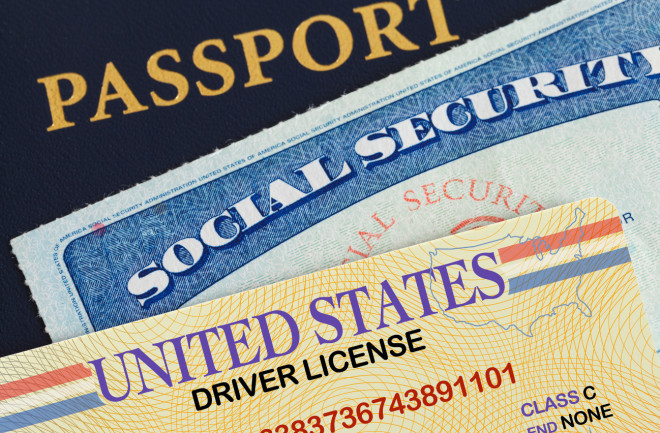Before area codes were introduced to the public in 1951, there were 10 million possible ways for the seven digits of a phone number to be arranged. This would have become a problem for telephone owners eventually; New York City alone had a population of almost 7.9 million that same year.
Yet with the rollout of three additional digits at the front of every phone number, suddenly the total number of possible combinations jumped from 10 million to a whopping 10 billion. Crisis averted, right?
Maybe for now. If you’re wondering whether your phone number — or other forms of identification, like your social security number — will require an extra few digits in the coming decades to remain distinct, read on to find out.
Read More: Phone Notifications Are Messing With Your Brain
Phone Numbers
If you do the math, there are technically 1,000 possible area codes, and each one can hypothetically contain up to 7,920,000 individual phone numbers. But in reality, it’s not really that simple.
How Many Area Codes Are in the U.S.?
For one, the North American Numbering Plan Administrator (NANPA) has a lot of rules concerning which number combinations are OK to use. The first digit of an area code can’t be “0” or “1,” for example, and the last two digits can’t be “11” because these are reserved as service codes.
In fact, any code that has the same second and third digit is considered an “easily recognizable code” and is often reserved for special services. You might recognize many of these as toll-free numbers.
These rules disqualify a lot of potential phone numbers but we still have plenty of wiggle room. A mere 335 area codes are currently in use — though, admittedly, that will soon change. The NANPA has plans to add a further 19 area codes over the next two years, with the earliest arriving in New York this month.
Do We Need Longer Phone Numbers?
More than a decade ago, when telephone numbers were growing at an unprecedented rate and invoking fears reminiscent of the “Y2K bug,” the Alliance for Telecommunications Industry Solutions called for an even more drastic change: 12-digit phone numbers.
In its report, the organization explained that adding an extra digit to every new area code and prefix (the set of numbers that directly follows the area code) would create an extra 640 billion possible phone numbers.
The math holds up, but for now it isn’t necessary.
Do Phone Numbers Get Reused?
The organization couldn’t have predicted that landline phones would end up a dying breed — according to USTelecom, some 90 million wired phone lines in the U.S. have dropped their landlines since the year 2000. Not to mention pagers and fax machines have largely gone the way of the dinosaur, too.
And if you’re still not convinced, consider the fact that phone numbers are regularly recycled after they’ve been out of use for a while. Of course, that’s not the case with all identification numbers.
The social security number (SSN) was created in 1936 to keep track of how much money U.S. workers were earning and ensure they received the correct social security benefits. Today, these nine digits are issued to all citizens, permanent residents and eligible nonimmigrant workers — and it’s transformed into a nearly universal identifier.
The first three digits originally corresponded to the geographical region in which a person was living at the time they received their SSN. Interestingly enough, this wasn’t done randomly; cardholders on the East Coast had the lowest numbers while those on the opposite side of the country had the highest.
But that only lasted so long. Beginning on June 25, 2011, the U.S. Social Security Administration (SSA) implemented a new, randomized methodology to protect the integrity of the numbers and also “extend the available pool of nine-digit SSNs in every state.”
So, how many potential SSNs are out there today? Mathematically speaking, there are literally a billion possible combinations of nine digits. Of course, like phone numbers, these come with certain rules.
Even the first person to receive an SSN, for example, didn’t receive all zeros. (For those wondering, the person in question, 23-year-old John D. Sweeney of New Rochelle, New York, was assigned 055-09-0001.) The social security card with the lowest number so far read only 001-01-0001.
According to the SSA, around 454 million numbers have been used to date — and another 5.5 million or so are newly issued each year. The administration claims to still have around 420 million unused combinations ready for assignment, enough to last for “several generations in the future,” despite the fact that SSNs are not recycled after a person dies.
Read More: How We Discovered the Number Zero
Other ID Numbers
That brings us to other types of ID numbers. You may be wondering whether the U.S. Postal Service’s 22-digit package tracking numbers will ever run out, for instance, or whether your six-character airline reservation code is truly unique.
Well, the latter case utilizes a “cheat code” of sorts: the alphabet. Because airline reservation codes consider both letters and numbers fair game, the total possible six-character combinations jumps from a million to an astounding 2 billion.
And for internet fiends, the 11-character video IDs on Youtube take this to an extreme. Their unique URL identifiers use a 64-character language that includes uppercase and lowercase letters, as well as numbers and even symbols.
It’s safe to say you won’t have to type an additional 12th character to locate your favorite video anytime soon. Phew!
Read More: How Physicists Are Making Sure We Never Run Out of Random Numbers

Social Security Numbers